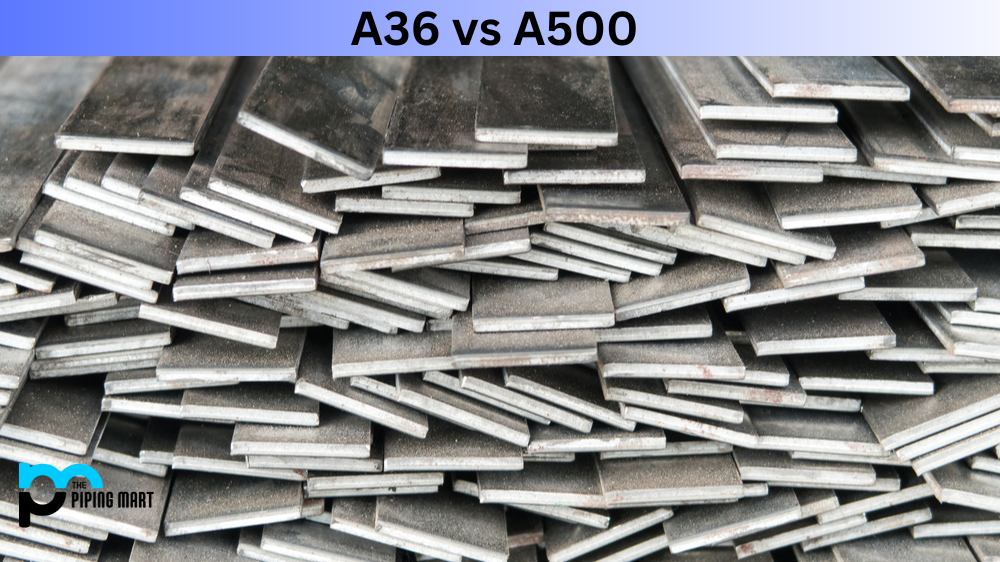When it comes to construction, choosing the correct steel can make all the difference. Two common types of steel are A36 and A500. These two steels have different properties that make them ideal for other applications. This blog post will explore the similarities and differences between A36 and A500 steel and help you determine which is suitable for your project.
What is A36 Steel?
A36 steel is a low-carbon steel that is very pliable and easy to weld. It has a minimum yield strength of 36,000 psi and a minimum tensile strength of 58,000 psi. A36 steel is commonly used for structural applications such as buildings and bridges. It is also used to manufacture tanks, frames, and machinery parts. Due to its low carbon content, A36 steel is easily machined and welded, making it a popular choice for various construction projects.
What is A500 Steel?
A500 steel is a high-strength, low-alloy steel ideal for structural applications. It has a minimum yield strength of 42,000 psi and a minimum tensile strength of 58,000 psi. A500 steel is commonly used in construction for columns, beams, and other load-bearing applications. It is also used to manufacture fences, gates, and signposts. Due to its strength and durability, A500 steel is ideal for outdoor applications where it will be exposed to the elements.
Differences Between A36 and A500 Steel
The main difference between A36 and A500 steel is their chemical composition. A36 steel has a carbon content of less than 0.3%, while A500 steel has a carbon content of 0.2% to 0.26%. This means A500 steel is slightly more robust and durable than A36 steel. Additionally, A500 steel is generally more expensive than A36 steel due to its higher quality and strength.
Another difference between A36 and A500 steel is their shapes. A36 steel is available in plates, bars, and conditions, while A500 steel is only available in hollow structural sections (HSS). This makes A500 steel more suitable for applications that require a specific situation, such as columns or beams.
Which Steel is Right for Your Project?
Choosing the correct steel for your project depends on several factors. If you need a low-cost, easily machinable steel suitable for general construction, A36 steel may be the right choice. However, if you need high-strength steel ideal for load-bearing applications or outdoor use, A500 steel may be the better option. Additionally, if you need a specific shape for your project, such as a column or beam, A500 steel may be the only option.
Other Differences
- A36 is a low-carbon steel that is commonly used in structural applications. It has good formability and weldability.
- A500 is a high-strength, low-alloy (HSLA) steel commonly used in structural applications. It has higher strength and better weldability than A36.
- Both A36 and A500 sheets of steel are easy to fabricate and can be used in various applications.
- A36 is typically cheaper than A500.
- A500 is available in various grades, including Grades B, C, and D. Grade B has the highest strength, while Grade D has the lowest.
- A36 is typically used in bridges, buildings, and other construction applications, while A500 is used in tubular structures, such as poles or pipes.
Conclusion:
In conclusion, A36 and A500 steel have different properties, making them ideal for other applications. A36 steel is a low-cost, easily machinable steel suitable for general construction. A500 steel is a high-strength, low-alloy steel ideal for load-bearing applications or outdoor use. When choosing between A36 and A500 steel, it is essential to consider the specific requirements of your project and select the steel that best meets those requirements.

A passionate metal industry expert and blogger. With over 5 years of experience in the field, Palak brings a wealth of knowledge and insight to her writing. Whether discussing the latest trends in the metal industry or sharing tips, she is dedicated to helping others succeed in the metal industry.




